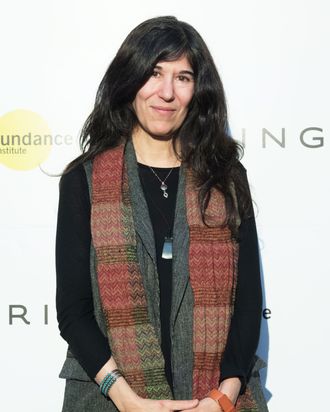
This interview was originally published during the Sundance Film Festival.
Few directors at the Sundance Film Festival have had their wildest dreams realized like Debra Granik. In 2010, Granik brought her second feature, Winter’s Bone, to the festival, and the Appalachian drama about a young woman unraveling the mystery of her father’s disappearance became a major critical hit, putting both Granik and her star Jennifer Lawrence on the map. The film grossed triple its budget and went on to earn four Oscar nominations, including one for Best Picture. “It meant a whole host of things to me,” Granik told Vulture this week. “It was an indication to go again, to keep working and keep the faith.”
But while the other directors whose movies were nominated that year have been prolific since — including David Fincher, Darren Aronofsky, and Tom Hooper — Granik is only just now returning to the world of narrative filmmaking. She will return to Sundance this week to unspool her latest effort, the powerful Leave No Trace, which stars Ben Foster and relative newcomer Thomasin McKenzie as a father and daughter who reject modern society to live in the woods until authorities intervene and try to nudge them toward a more conventional life. (Vulture has the exclusive first clip from the film below.)
Fans of the filmmaker could be forgiven for wondering if Granik, too, had disappeared into the woods. Aside from her documentary Stray Dog in 2014, the 54-year-old director has been mostly absent from the screen. “Every filmmaker has this short book of films that don’t get made, for a whole host of reasons,” said Granik, who admitted that sometimes, that inability to get a project off the ground could wear on her. “There’s a period where you feel very hinky and low about yourself, like, That was a lot of time and there’s nothing to show for it,” she said. “I’ve tried to tell myself that if you’re going to be a filmmaker, you can’t really talk like that about time, because you’ll hate yourself or feel very worthless. It never felt like an unbusy time. The years were filled with labor as a cultural worker, but yes, the product was scant.”
In part, that’s because she’s so often drawn to stories about impoverished Americans living on the margins of society. “I think sometimes, the subject matters I do are not very commercial, so they’re not easy shoo-ins,” said Granik. “It takes a bold financier to stand up and figure out what kind of work they’d like to see in the buffet.”
And that cinematic buffet is richer for having Granik and Leave No Trace in it. While the film is filled with authentic details about carving out an existence off the grid, the most resonant thing about it is Granik’s exploration of a daughter who reveres her father, then realizes she must grow past him and stand on her own two legs. “There are different ways we go about that cleaving from someone you’re close to,” said Granik. “It can be quite violent, it can happen in stages — we do it different ways, all of us. So she represented that type of character for me, where her independence comes with the gravitas of responsibility. She knows too much to think that her independence would be this blithe, clean severance.”
McKenzie, who plays the 13-year-old daughter Tom, is another discovery for Granik. The young actress resembles Rooney Mara and the singer Lorde with her still, enigmatic countenance, and McKenzie gives the character an unsentimental practicality: Though her father is unable to adapt to mainstream society, their years-long experience in the woods has actually taught Tom how to adapt to almost anything. Like Lawrence and Vera Farmiga, who found her breakout role in Granik’s debut Down to the Bone, McKenzie is poised for a spotlight moment.
“When I find those actors who are going to work that hard and collaborate that deeply, my role is to make sure there’s a whole lot there for them to work with,” said Granik. “Each of those actresses kind of lived the film before they even enacted it: Vera put a lot of Vera in that, Jen was able to find that point of connection, and for Thom, the same. When they give you that sign, as each of them did, sometimes you feel weird because it’s almost become too easy! Your role becomes to ask for slight variations.”
Hollywood may be eager to sign McKenzie up for bigger films after Leave No Trace, but does Granik want to partake in those studio offers, too? “I don’t want to seem so out there that I can’t participate in any sort of mainstream practice, but I do think the subjects I’m interested in are not frequently the ones that are suited to that system,” she said. “One metaphor I’ve kind of landed on is that there’s Big Agriculture and the small farmer, and they don’t cross. The small farmer wages this big non-GMO fight, and then there’s Big Ag, with more blue screen and more CGI and bigger budgets.”
Still, Granik is open to whatever comes her way, since she’s built her career on a willingness to follow inspiration anywhere. “Sometimes you get ensnared by an idea, and it’s what I call ‘the sticky burr’: You go hiking and a burr sticks to you,” she said, “and that’s the film you’re going to make.”

